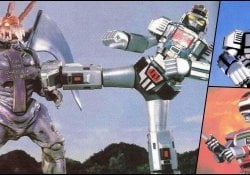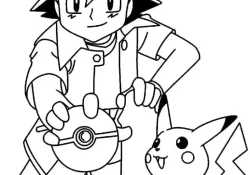Japanese culture is very different from Western culture and this is reflected in themes such as the entertainment produced there, as in the case of reality I will not be able to provide the translation for "show Terrace House" as it appears to be a request to watch a specific show.
If you still don't know this novelty offered by the streaming channel Netflix, it's worth checking out and getting to know more about Japanese culture.
It's a media construction very different from Big Brother Brasil, a reality show that has great success in our country, but it didn't have any chance regarding the concept of entertainment expected by Japanese consumers.
This format, so popular here at BBB, in which several people of different origins and ages are confined for a long time in the same house, competing for a high-value prize, is apparently not successful there.
Some people attribute this to the quality of Japanese television as a whole, considered superior when compared to several countries, others focus on the quality of reality TV itself.
Upon coming across a Japanese reality show whose subtitle is “Boys & Amp; Girls in the City” The first impression may be that this is a local version of the BBB, but this is a misconception.
In this article you will get to know a little about Terrace House and understand what we mean by this statement. Keep reading to check it out!
Índice de Conteúdo
Terrace House, the reality show that has become more popular
This production is a series that resulted from a partnership between Netflix and Fuji TV, the company that initially created the program originally shown only on Japanese television in seasons between 2012 and 2014.
In fact, the idea when there was a partnership was for a production of 18 episodes per week, but there was a great audience success that extended its conclusion to new seasons.
For those who don't know this production yet, using the Brazilian reality that we have to analyze and Terrace House generates an unfair circumstance. And perhaps it is exactly this differentiated construction that makes the reality show so popular with such a diverse audience.
Discover some of the reality
It is possible to observe differences in terms of:
- Your characteristics;
- The program profile;
- The profile of the participants;
- The freedom that the presenter has to speak to the participants.
In this program, six young boys and six girls live together in a very nice house. The similarities with the BBB stop here, because in the Japanese version they move freely, being able to leave the house, study and work.
They use a car that the production makes available to the participants to carry out their daily activities. It is possible to find friends and access the internet as well, that is, there is no limitation and control over the participants.
They are not there in a game that creates a competition for a cash prize, and they are not subject to elimination by the public.
Total freedom is given to each one of them to decide to leave the program whenever they want, so that new members are introduced when this occurs.
Even with these differences in the psychological aspects that permeate the game, it was fatally marked by the suicide of one of the participants due to cyberbuling, a big problem these days.
With each other's daily lives being naturally portrayed in the series, they can go about their normal lives and there is no evidence of the leader.
The possibility of romantic entanglements exists, a series of stories unfold, without the pressure that exists in Big Brother.
The joviality of the housemates is an aspect that stands out in the Reality, being a requirement for their participation.
Realize the difference between what is produced here, where people of different ages are telling their lives outside while they are confined.
What we see there are young people, with a patterned beauty, who are living their lives normally, looking for a passion that may or may not happen in the house.
What attracts the audience so much?
You must be wondering if, with so many differences from our typical reality shows, the program really attracts attention.
And its success with the public lies precisely in this normality of the representation of the real day to day of people who do not depend on popularity or pretending to be who they are not to compete with each other.
Despite the cameras, there is a great naturalness in the way each participant acts, but there is no directed effort to try to look cooler or prettier.
Cleaning the house, going shopping to stock the fridge, wearing pajamas throughout the day and being able to be at home peacefully without having to hide that pimple, is what brings this audience.
This presentation allows a great recognition of the audience's real routine, which generates so much engagement.
Any audience that better analyze the series will realize that what captivates is the unfolding of basic human relationships.
Conflicts caused by lack of empathy, lack of skill with words and immaturity occur, as in any real coexistence. The editing of the episodes takes place with a balance between a series of dramatic, fun, serious and relaxed moments.
The article is still halfway through, but we recommend also reading:
The application of humor in the series
An interesting feature is the interruptions by well-known Japanese entertainment figures who make funny comments about the participants.
For those who doubt the potential of Japanese humor, thinking that the culture is more naive and restrained, you will certainly be surprised by a good laugh.
Commentators use sarcasm and express their ideas frankly and with bitter criticism that address the behavior of participants allowing for effective insight.
Final considerations
In this article you got to know a brief introduction to Terrace House, a reality show that stands out in the taste of the Japanese, and has been gaining new audiences after debuting on Netflix, one of the main streaming platforms today.
As you may have noticed with the differences that we pointed out, in Japan there is this highlight of a reality production that is a little lighter than the model that became popular here, as in the BBB.
This is because Eastern culture holds values and perspectives a little different from ours, and their “sneak peek” is to focus on a person with an ordinary life simply living, and not confined players.
Terrace House first aired on October 12, 2012, and won over audiences in Japan. The TV network Fuji, responsible for the production of the program, bet big to reach the younger population, sensitive and connected to the trends of the moment.
The strategy worked and in 2015 Netflix signed a partnership with the Japanese network, agreeing contracts for new productions and the platform acquired the rights to the franchise.
It's a different dynamic from the Brazilian reality formula that exposes sculptural bodies that are locked in a house in parallel with the contact with reality, capable of anything for the 15 minutes of fame.
The notion of what is authentic, natural and real presented by the Japanese involves a concept called by some as “Japaneseness” that focuses on young people, by focusing on the individual subject as much as on its collective character.
We conclude this article with an observation about the unique role that this reality show has on the widespread ideas about Japan, as well as about its society in a dynamic perspective of monitoring the everyday experiences of a young social group.
What is presented in front of the cameras shows something different from what was until then popular as a reference to the country's culture, such as the famous japanese animations.
The natural and real dialogue of the Japanese youth in their daily life shows an aspect that was not so well known outside of there until then. Netflix made it possible to broaden views on the country by expanding the visibility of the reality Terrace House so much internationally.







